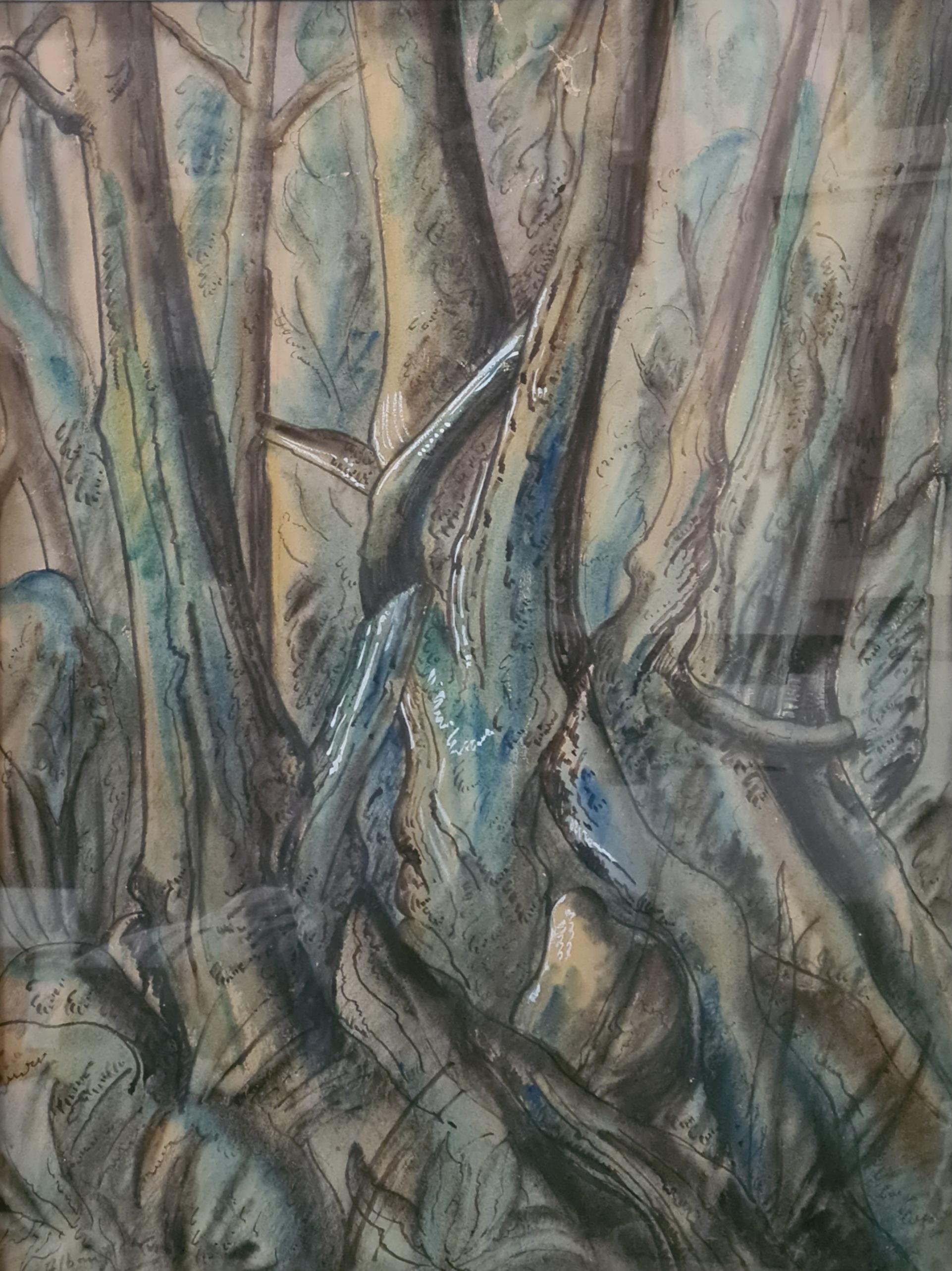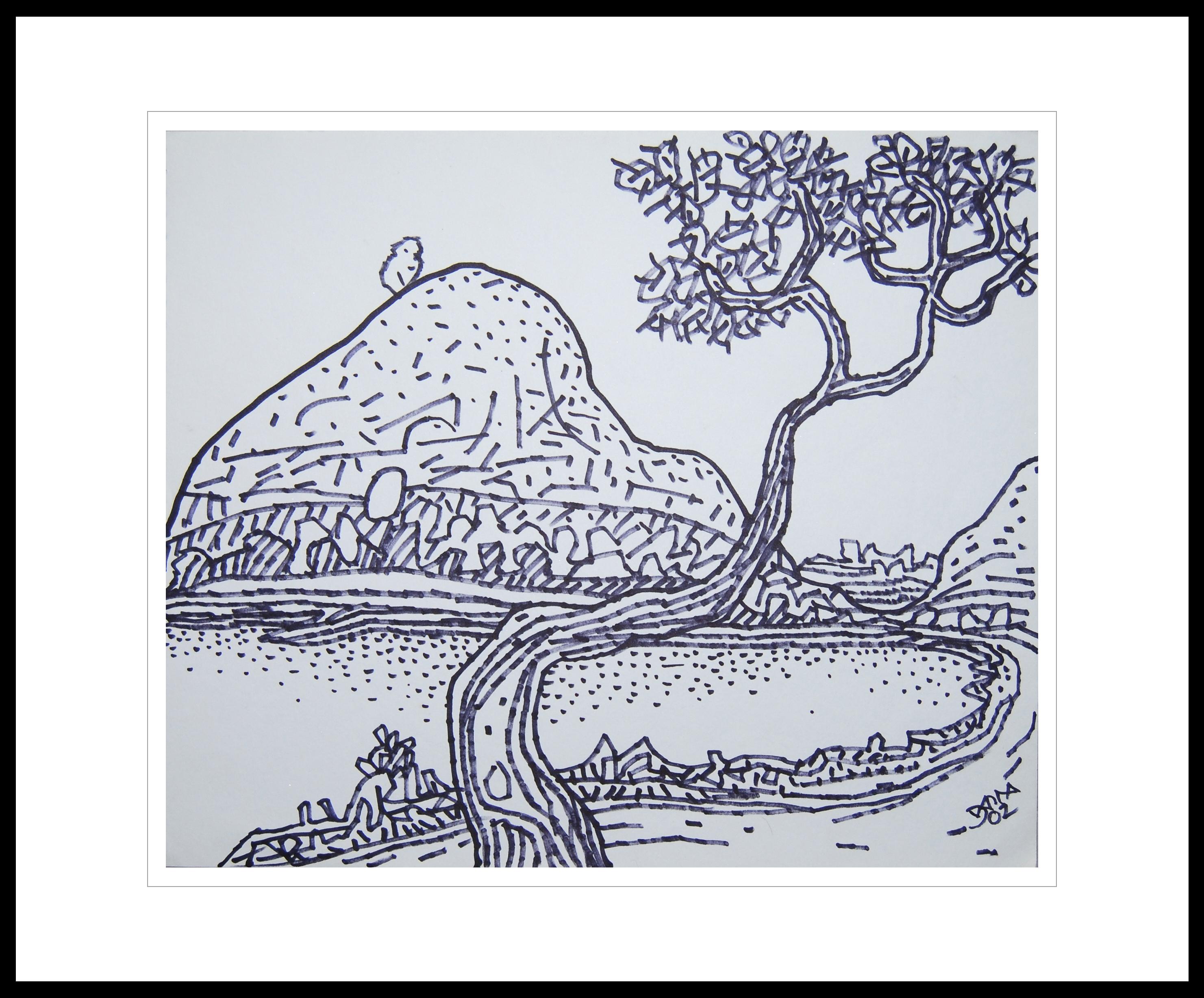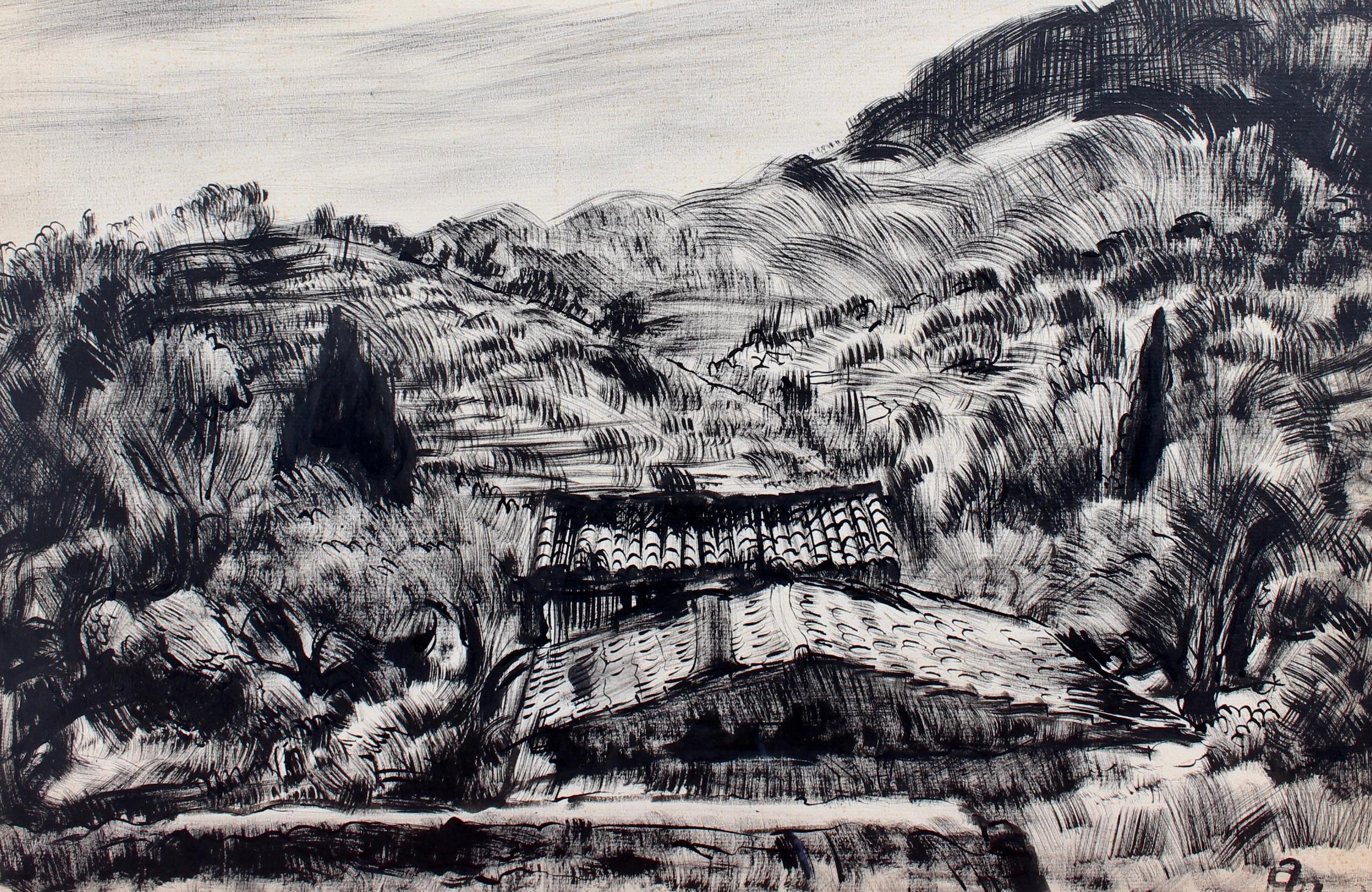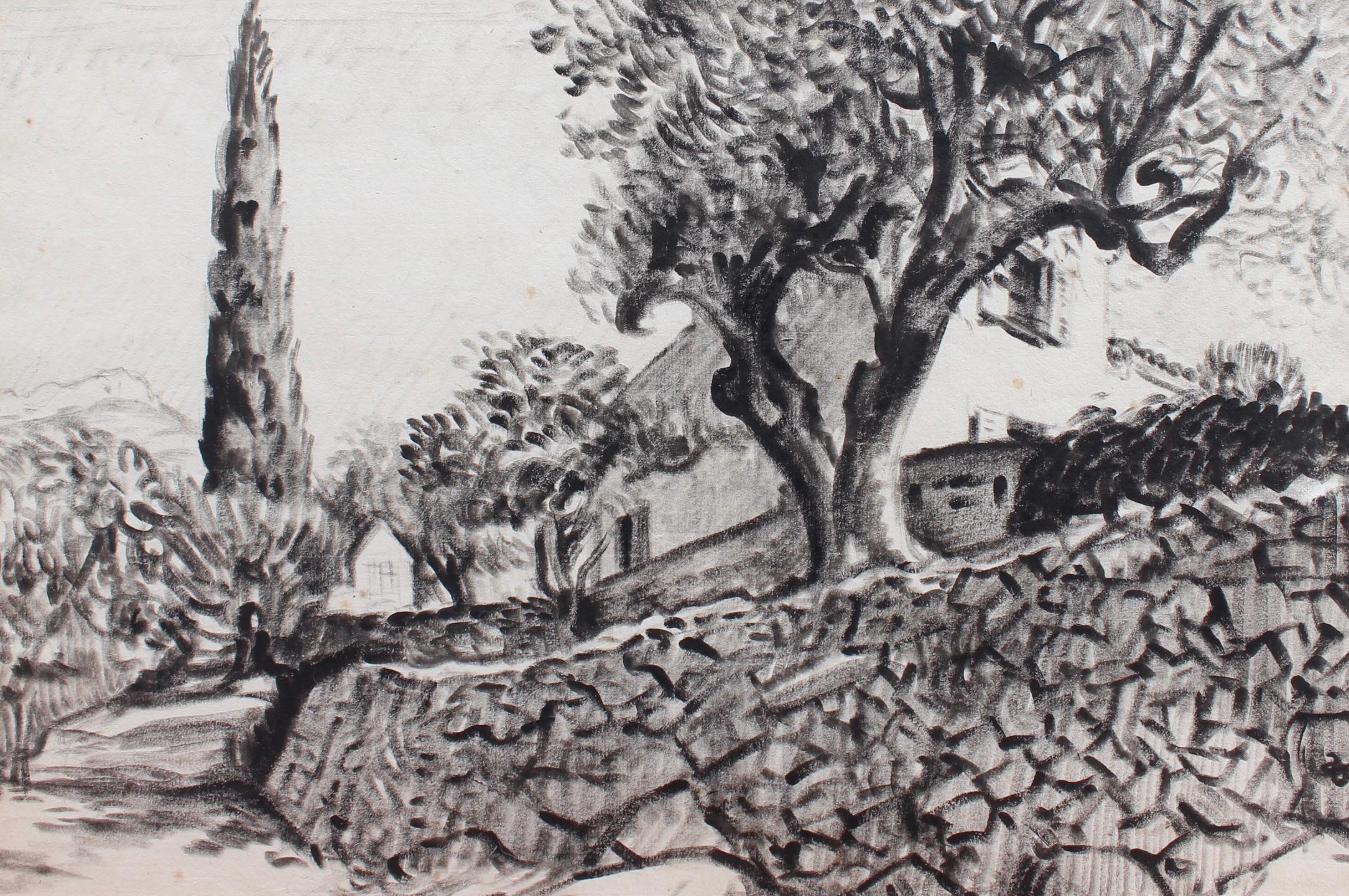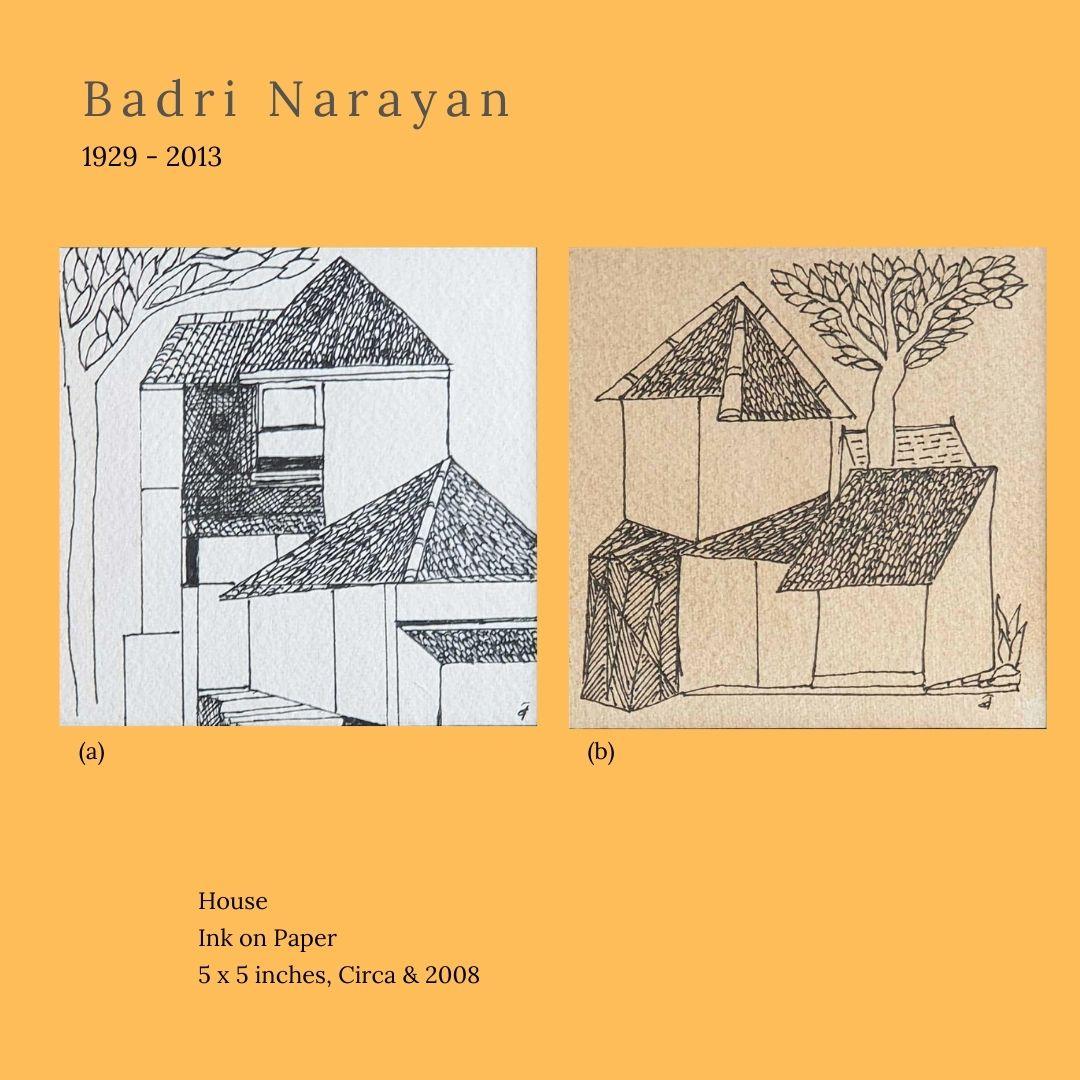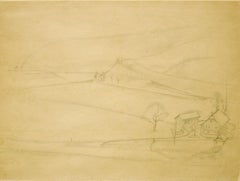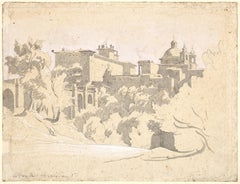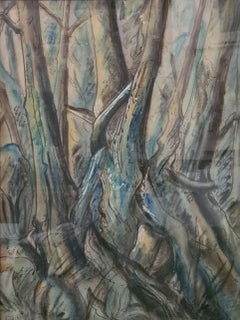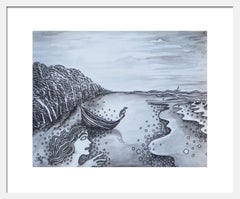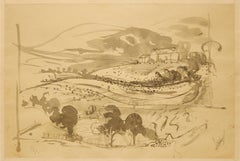
Study for "La Bergerie" - 1957-1960 - a double-sided ink wash signed by Balthus
View Similar Items
Want more images or videos?
Request additional images or videos from the seller
1 of 9
Balthus (Balthasar Klossowski de Rola) Study for "La Bergerie" - 1957-1960 - a double-sided ink wash signed by Balthus 1957-1960
1957-1960
About the Item
- Creator:Balthus (Balthasar Klossowski de Rola) (1908 - 2001, French)
- Creation Year:1957-1960
- Dimensions:Height: 11.82 in (30.03 cm)Width: 17.82 in (45.27 cm)
- Medium:
- Movement & Style:
- Period:
- Condition:Recto Signed with monogram lower left “Bs.” Size : 11 13/16" x 17 13/16" (30 x 45.3 cm) Framed : 21 1/2 “ x 27 3/16” (54.8 x 69 cm).
- Gallery Location:PARIS, FR
- Reference Number:1stDibs: LU156829447592
About the Seller
5.0
Vetted Seller
These experienced sellers undergo a comprehensive evaluation by our team of in-house experts.
Established in 2020
1stDibs seller since 2021
8 sales on 1stDibs
Typical response time: 2 hours
More From This SellerView All
- Landscape with Trees and a Fisherman walking, a drawing by Jan Van GoyenBy Jan Josefsz Van GoyenLocated in PARIS, FRNo Dutch draughtsman ever captured the atmosphere of the rural countryside of Holland with the same atmospheric and engaging simplicity that Van Goyen achieved in drawings such as this. Indeed, his landscapes were seminal in the development of the genre. The present sketch conveys a striking sense of movement within the natural landscape, conveyed by the deftly applied strokes of chalk, from which the artist’s hand can be sensed. The composition is characteristic of his work, with the low horizon affording significance to the broad sky and the soaring birds within. This feeling of windswept motion powerfully evokes the expansive Dutch farmland with which he was evidently preoccupied. 1. Jan van Goyen...Category
1650s Old Masters Landscape Drawings and Watercolors
MaterialsChalk, Ink, Laid Paper
- Study for « Paysage de Fribourg » - 1943 a drawing by Balthus (1908 - 2001)By Balthus (Balthasar Klossowski de Rola)Located in PARIS, FRProvenance: Frédérique Tison, Château de Chassy (Burgundy-Franche Comté - France) Bibliography: J. Clair, V. Monnier Balthus, catalogue raisonné of the complete works, Gallimard, Pa...Category
1940s Modern Landscape Drawings and Watercolors
MaterialsPaper, Pencil
- View of Ariccia, a preparatory drawing by Achille Bénouville (1815 - 1891)Located in PARIS, FRThis very modern drawing presents a view of Ariccia, a small town 25 kilometres south-east of Rome. The Palazzo Chigi (in which the film-maker Luchino Visconti would film a large part of The Leopard a century later) and the adjoining church are seen from the bottom of the ravine that surrounds the town. This drawing is a moving testimony to the attraction of the city for artists of the Romantic period, who established in Ariccia a vivid artists' colony. 1. Achille Bénouville...Category
1850s Romantic Landscape Drawings and Watercolors
MaterialsInk, Gouache, Pencil
- Italian Landscape, a drawing by Louis-Jean Desprez (1743 - 1804)Located in PARIS, FRThis landscape, masterfully executed in pen and wash by Louis-Jean Desprez around 1779, probably represents a view of the Roman countryside. The treatment of the trees is very similar to that of two engravings which Desprez executed in Rome, The Island of Cythera and The Temple of Love. 1. Louis-Jean Desprez, a cosmopolitan life between Italy and Sweden Born in Auxerre in 1743, Louis-Jean Desprez probably began his apprenticeship with the engraver Charles-Nicolas Cochin...Category
1770s Old Masters Landscape Drawings and Watercolors
MaterialsCarbon Pencil, Ink
- A landscape drawing by Claude Lorrain, with a preliminary sketch on the versoBy Claude LorrainLocated in PARIS, FRThis study presents a typical Roman countryside landscape: an ancient mausoleum in front of which a cart is passing by followed by two peasants. If the technique (a pen drawing on graphite lines, completed with a wash of brown and grey inks) and the signature inevitably evoke the art of Lorrain, we find on the verso of this drawing additional evidences that lead us to consider this unpublished drawing as a work by the master. The motif of the mausoleum has been taken up in pen on the verso in a technique that can be found in several other drawings by Lorrain. There is also a study of three characters, which can be considered as preparatory to Lorrain’s painting entitled The Port of Ostia with the Embarkation of Saint Paula, leading us to claim this attribution with a dating of around 1629. 1. Claude Lorrain or the perfection of classical landscape in Rome in the 17th century Claude Gellée was born in 1600 in Chamagne in Lorraine. Orphaned at the age of twelve, he spent a year with his brother in Freiburg, where the latter was a woodcarver. Claude Gellée then probably arrived in Rome in 1613, where he joined the workshop of Agostino Tassi (1580 - 1644) in 1617. Between 1619 and 1620 he studied for two years in Naples in the workshop of Goffredi Wals (who was himself a former pupil of Tassi). In 1625 he returned to Lorraine for two years where he worked alongside Claude Deruet. He then returned to Rome, a city he never left for the rest of his life (except for short trips to the surrounding countryside). From 1627 to 1650 he lived in Via Margutta. From 1635 onwards he became a renowned painter and commissions started to pour in. Considered during his lifetime as the most accomplished of the classical landscape painters, his reputation never faded. Between 1629 and 1635 Le Lorrain often went to the Roman countryside to draw with his friend Joachim von Sandrart (1606 - 1686). He became a member of the Academy of Saint Luke in 1633, while being closely acquainted with the Bentvueghels, this guild which brought together the young Nordic painters active in Rome. In 1643 he joined the Congregation of the Virtuosi. In 1650 he moved to Via Paolina where he lived until his death. Little is known of his intimate life. He seems to have had a daughter, Agnes, from an ancillary love affair. In 1657/ 1658 she moved in with him. Stricken with gout in 1663, he died in 1682. 2. Description of the drawing; the technique of nature studies Two peasants are walking behind a horse-drawn cart on a road that winds through ancient tombs. While a rectangular tomb with a columned facade can be seen in the distance, the cart passes an important ancient building. It has a circular shape and its partially ruined façade is decorated with columns. The start of a second floor can...Category
1660s Old Masters Landscape Drawings and Watercolors
MaterialsInk, Graphite, Pen
- Pavilion with waterfall, an ink wash attributed to Hubert Robert (1733 - 1808)By Hubert RobertLocated in PARIS, FRThis large wash drawing is a slightly enlarged version of a composition executed by Hubert Robert in 1761, at the end of his stay in Rome. This composition is a marvellous synthesis of the painter's art: the clatter of the waterfall, in a grandiose setting inspired by antiquity, is opposed to the intimacy of a genre scene, made up of a few peasant women performing some agricultural work. 1. The stay in Italy, an important founding stage in Hubert Robert's carrier Hubert Robert came from a privileged family of Lorraine origin, linked to the Choiseul-Stainville family, where his father was an intendant. The protection of this powerful aristocratic family enabled him to study classical art at the Collège de Navarre (between 1745 and 1751). After a first apprenticeship in the workshop of the sculptor Slodtz (1705 - 1764), he was invited by Etienne-François de Choiseul-Beaupré-Stainville (the future Duke of Choiseul, then Count of Stainville) to join him in Rome when the latter had just been appointed ambassador. Hubert Robert arrived in Rome on 4 November 1754, aged twenty-one, and remained there until 24 July 1765. Thanks to his patron, he obtained a place as a pensioneer at the Académie de France without having won the prestigious Prix de Rome. On his arrival in Rome, he frequented the studio of the painter Giovanni Paolo Panini (1691 - 1765), the inventor of the ruins painting, and also benefited from the proximity of Giovanni Battista Piranesi’s studio (1720 - 1778). During his eleven-year stay in Rome, Hubert Robert studied the great Italian masters and drew many of the great archaeological sites, multiplying the sketches which he would use throughout his career, becoming one of the masters of the "ruin landscape". Back in Paris in 1765, he was very successful. He was accepted and admitted to the Royal Academy of Painting and Sculpture on the same day, July 26th 1766, which was very unusual. He was appointed draughtsman of the king's gardens in 1784, then guard of the Royal Museum from 1784 to 1792. Arrested in 1793 and detained in the prisons of Sainte Pélagie and Saint-Lazare, he was released in 1794 after the fall of Robespierre and undertook a second trip to Italy. In 1800, Hubert Robert was appointed curator of the new Central Museum and died at his home in Paris in 1808. 2. Description of the artwork This composition, formerly called "La Cascade du Belvédère Pamphile" , is undoubtedly inspired by the water theatres of the Frascati villas. Hubert Robert presents a hemicycle of columns with rustic bossages at the foot of which is a cascade of water falls into a basin. The hemicycle is flanked by two high walls, pierced by window wells topped with antique masks...Category
1760s Old Masters Landscape Drawings and Watercolors
MaterialsInk, Watercolor
You May Also Like
- Modernist Watercolour On Paper, Trees At Buckfast AbbeyLocated in Cotignac, FREarly 1960s work on paper of a group of trees at Buckfast Abbey in Devon, England, by Alban Atkins. Signed bottom left, titled and dated to the reverse. There is also a collection or accession number to the backboard. Atkins has captured the sculptural nature of the tree trunks as they have grown in the landscape giving the work a feeling of living, writhing things as well as an abstract feel in the composition. Atkins was one of the group of important artists chosen and commissioned by Sir Kenneth Clark...Category
1960s Modern Landscape Paintings
MaterialsWatercolor, Paper, Pastel, Ink
$475 Sale Price45% Off - Landscape, Watercolour, Ink on Paper by Modern Indian Artist "In Stock"By Prakash KarmarkarLocated in Kolkata, West BengalPrakash Karmakar - Landscape - 20 X 30 inches (unframed size) Watercolour, Ink on Paper Delivery of shipment in ready to hang condition. Style : Legendary master artist Lt. Prokash ...Category
Early 2000s Modern Landscape Drawings and Watercolors
MaterialsWatercolor, Ink, Paper
$1,200 Sale Price40% Off - Landscape Drawing, Village Scenery, Ink on paper, Bengal Master Artist"In Stock"By Prokash KarmakarLocated in Kolkata, West BengalPrakash Karmakar – Landscape – 11.5 x 10.5 inches (unframed size) Ink on paper Signed lower right in Bengali Inclusive of shipment in roll form. Karmakar is best known...Category
Early 2000s Modern Landscape Drawings and Watercolors
MaterialsInk, Paper
- Mediterranean Landscape IIBy Pierre Dionisi 1Located in London, GBMediterranean Landscape II', ink on art paper, by Pierre Dionisi (circa 1930s). Sepia-toned, original drawing in a compelling style depicts a view of a ...Category
1930s Modern Landscape Drawings and Watercolors
MaterialsPaper, Ink
$609 Sale Price20% Off - The Olive Tree Behind the Stone WallBy Pierre Dionisi 1Located in London, GB'The Olive Tree Behind the Stone Wall', ink on art paper, by Pierre Dionisi (circa 1930s). Sepia-toned, original drawing in a compelling style depicts a...Category
1930s Modern Landscape Drawings and Watercolors
MaterialsPaper, Ink
$457 Sale Price20% Off - Mediterranean LandscapeBy Pierre Dionisi 1Located in London, GB'Mediterranean Landscape', ink on art paper, by Pierre Dionisi (circa 1930s). Sepia-toned, original drawing in a compelling style depicts a view of Prov...Category
1930s Modern Landscape Drawings and Watercolors
MaterialsPaper, Ink
$609 Sale Price20% Off
